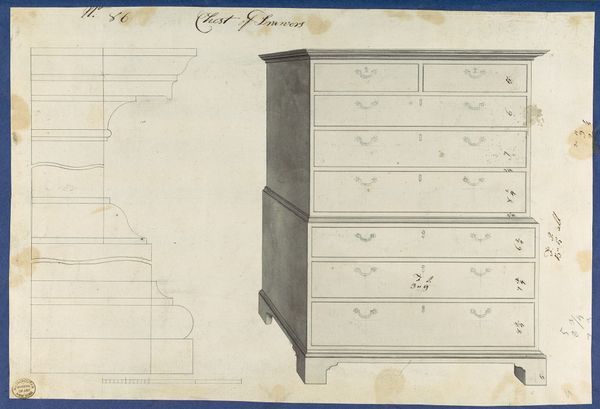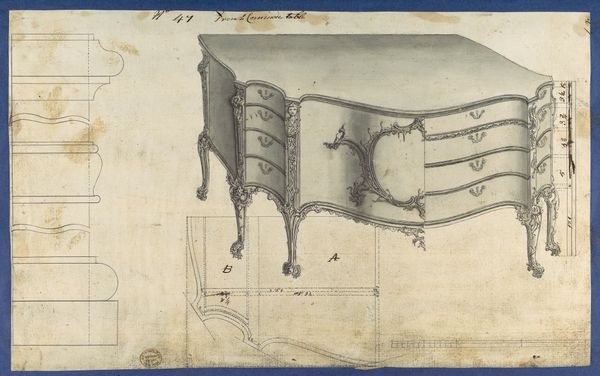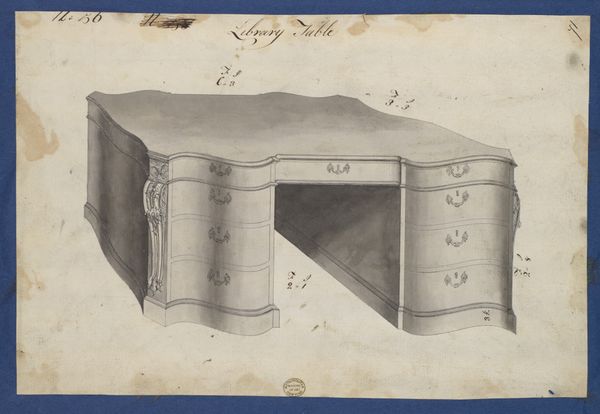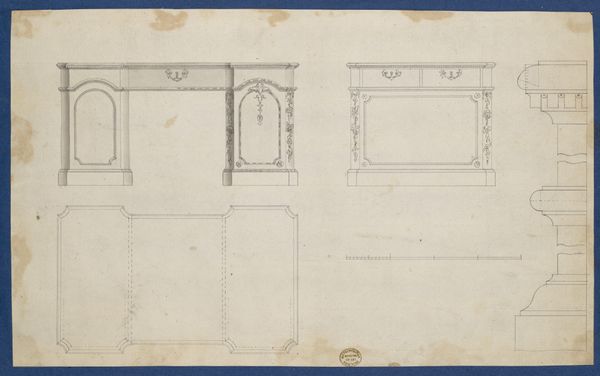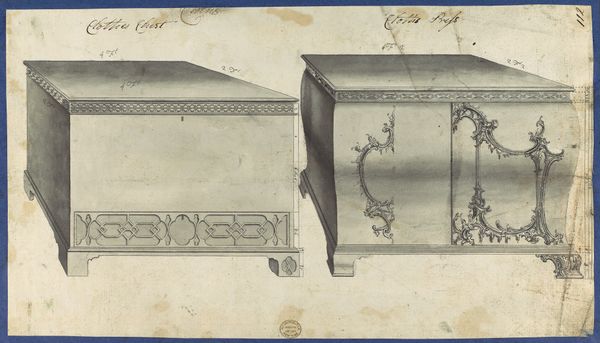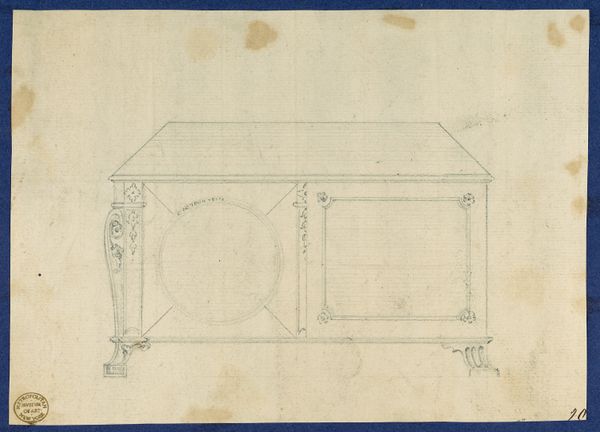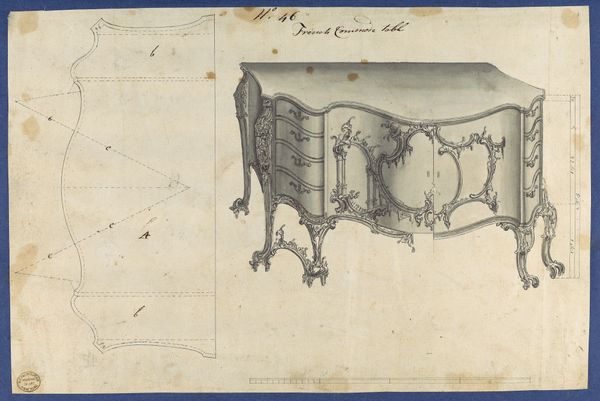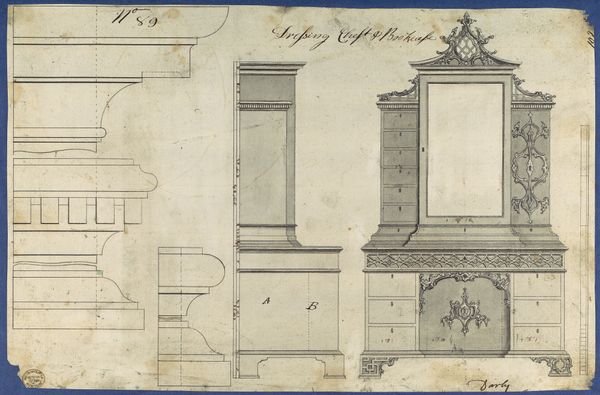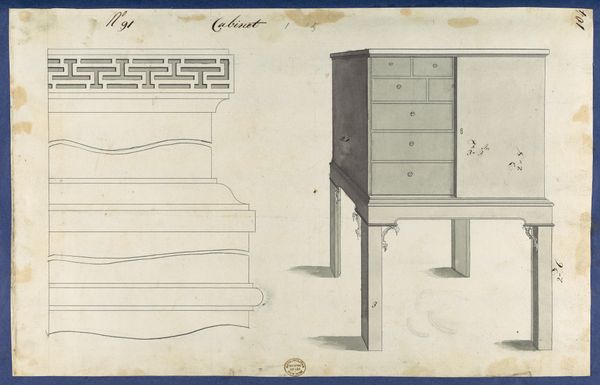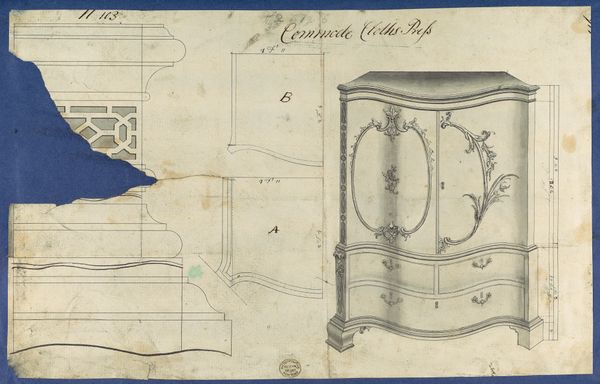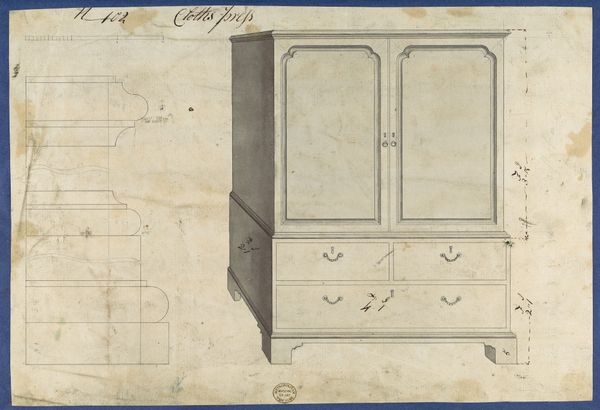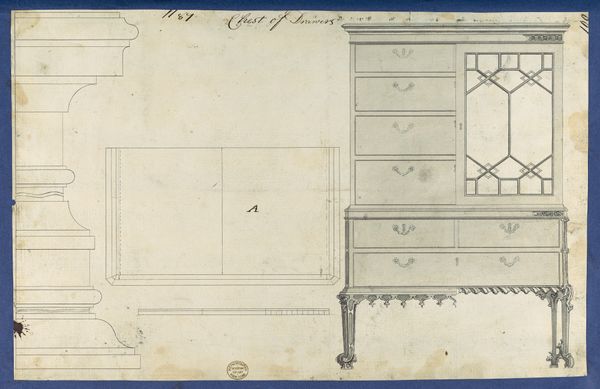
French Commode Table, from Chippendale Drawings, Vol. II 1753
0:00
0:00
drawing, print, pencil
#
drawing
#
neoclacissism
# print
#
form
#
pencil
#
line
#
decorative-art
Dimensions: sheet: 7 13/16 x 12 5/16 in. (19.8 x 31.3 cm)
Copyright: Public Domain
Curator: Ah, I find this quite evocative. This detailed print from 1753 gives us a glimpse into the meticulous world of Thomas Chippendale. It's a design sketch, titled "French Commode Table, from Chippendale Drawings, Vol. II," currently housed at the Metropolitan Museum of Art. There's a dance between pencil, pen, and ink… almost feels like peering into a dream. Editor: A dream perhaps of imperial ambition. This design, though intricate, reeks of class privilege and aristocratic excess. Commode tables weren’t just furniture; they were blatant displays of wealth during a period defined by severe economic inequality. Curator: I suppose. Though I do admire the line work. See how he suggests the curvature, the potential gleam of the finished wood? It almost vibrates with possibility, even on paper. It hints at Neoclassicism and something grander. Don't you feel drawn into its world? Editor: Drawn into a world built on the backs of laborers and colonized peoples? It's beautiful in a problematic way. Think about who this commode table was meant for, the kind of life it would furnish. And the "French" influence he name-checks so readily? It suggests an aspirational climb to emulate global power. Curator: But can't we also admire the craftsmanship? The artistry behind it, even if the context is troubling? Chippendale synthesized styles, incorporating Gothic, Rococo, and even Chinese elements into his designs. Editor: Synthesis or appropriation? I think about the conditions in which the exotic materials were extracted and transported. It’s important to remember that aesthetics are never neutral, right? They carry historical weight. Curator: Right, right. Perhaps it’s naive of me to get so caught up in the aesthetic. All this discussion certainly forces you to think twice, doesn't it? To consider all angles... Editor: Exactly. We can’t erase history, but we can re-examine it critically, allowing us to learn. I, for one, believe it enriches the experience of seeing.
Comments
No comments
Be the first to comment and join the conversation on the ultimate creative platform.
